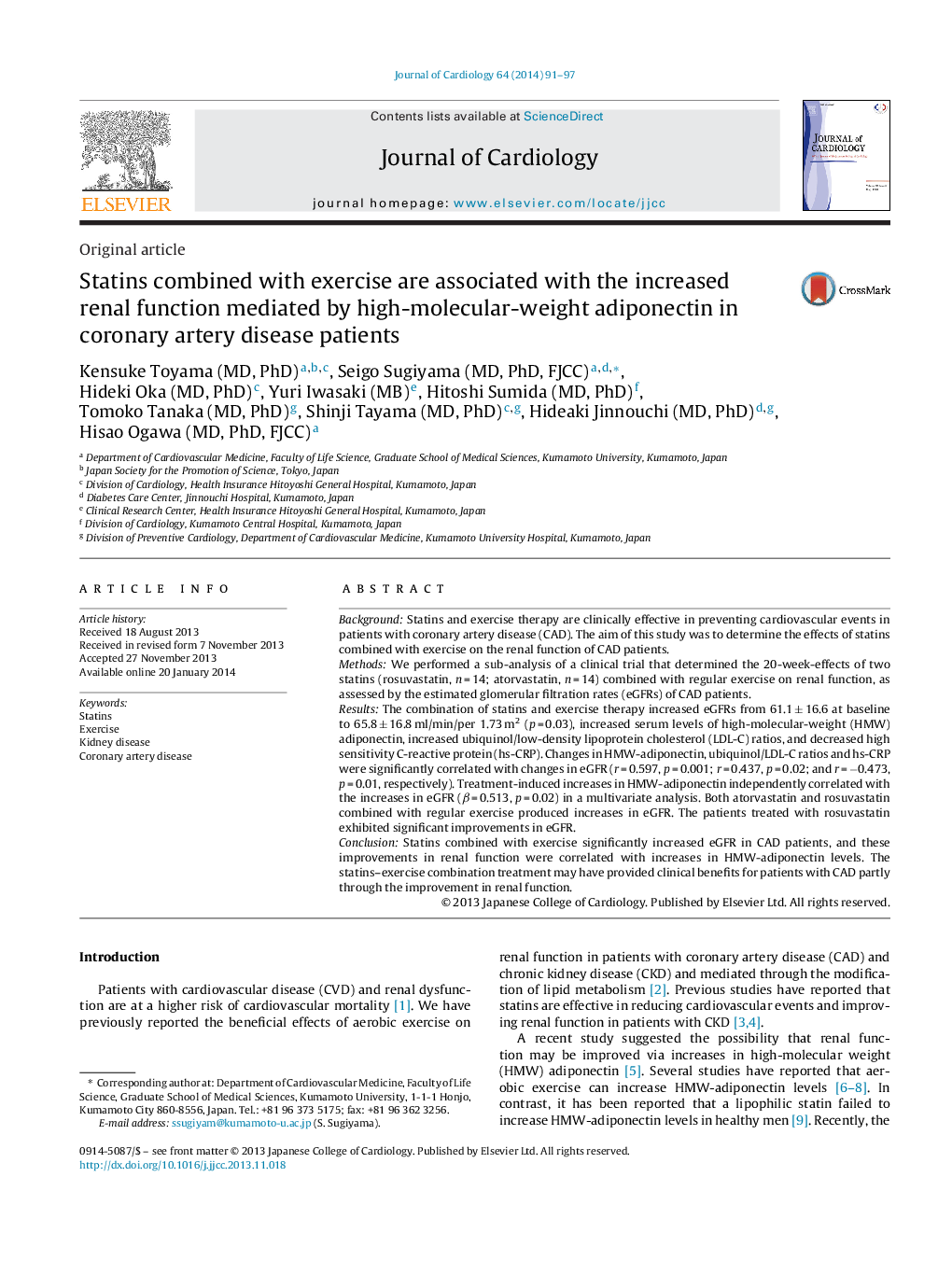| Article ID | Journal | Published Year | Pages | File Type |
|---|---|---|---|---|
| 2962956 | Journal of Cardiology | 2014 | 7 Pages |
BackgroundStatins and exercise therapy are clinically effective in preventing cardiovascular events in patients with coronary artery disease (CAD). The aim of this study was to determine the effects of statins combined with exercise on the renal function of CAD patients.MethodsWe performed a sub-analysis of a clinical trial that determined the 20-week-effects of two statins (rosuvastatin, n = 14; atorvastatin, n = 14) combined with regular exercise on renal function, as assessed by the estimated glomerular filtration rates (eGFRs) of CAD patients.ResultsThe combination of statins and exercise therapy increased eGFRs from 61.1 ± 16.6 at baseline to 65.8 ± 16.8 ml/min/per 1.73 m2 (p = 0.03), increased serum levels of high-molecular-weight (HMW) adiponectin, increased ubiquinol/low-density lipoprotein cholesterol (LDL-C) ratios, and decreased high sensitivity C-reactive protein (hs-CRP). Changes in HMW-adiponectin, ubiquinol/LDL-C ratios and hs-CRP were significantly correlated with changes in eGFR (r = 0.597, p = 0.001; r = 0.437, p = 0.02; and r = −0.473, p = 0.01, respectively). Treatment-induced increases in HMW-adiponectin independently correlated with the increases in eGFR (β = 0.513, p = 0.02) in a multivariate analysis. Both atorvastatin and rosuvastatin combined with regular exercise produced increases in eGFR. The patients treated with rosuvastatin exhibited significant improvements in eGFR.ConclusionStatins combined with exercise significantly increased eGFR in CAD patients, and these improvements in renal function were correlated with increases in HMW-adiponectin levels. The statins–exercise combination treatment may have provided clinical benefits for patients with CAD partly through the improvement in renal function.
